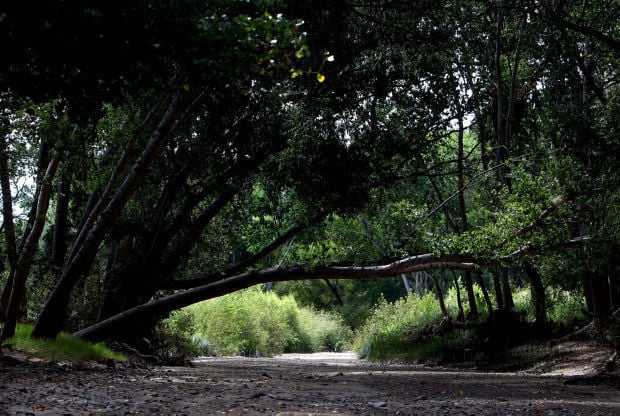A
federal agency gave the proposed Rosemont Mine its final biological
clearance Tuesday, saying the mine won’t jeopardize a dozen imperiled
species living on or near its site or illegally destroy their habitat.
The
Final Rosemont Biological Opinion from the U.S. Fish and Wildlife
Service acknowledged that the mine will cause significant adverse
impacts on many of the species. It went into more detail on impacts on
endangered and threatened fish and birds than it had in previous
opinions.
This opinion, a
rewrite of a 2013 report, was ordered after authorities discovered an
endangered ocelot living near the site and concluded they had to take a
second look at impacts on surrounding streams and wetlands.
The new opinion says many of the
mine’s negative impacts on species will be ameliorated by a host of
mitigation measures, some new, some previously disclosed. The new ones
include the hiring of a biologist/project manager for monitoring of
impacts on wildlife, a $3 million program to manage and remove invasive
species and a $1.25 million program to upgrade habitat for the
endangered Southwestern willow flycatcher and the threatened Western
yellow-billed cuckoo.
The
opinion is one of the key legal hurdles that Rosemont Copper and its
parent company, Hudbay Minerals Inc., needed to clear before getting
final federal decisions on the proposed copper mine in the Santa Rita
Mountains southeast of Tucson. The U.S. Forest Service and the U.S. Army
Corps of Engineers must make those decisions.
Mine
opponents contend the opinion won’t survive a court challenge. That’s
in part due to their view that the service improperly decided the mine
won’t jeopardize jaguar existence or illegally destroy jaguar habitat.
The only known U.S. wild jaguar has lived near the mine site in recent
years.
The new report
acknowledges that the mine’s lowering of the water table to create the
open pit could or would dry up a stretch of Empire Gulch, a key
tributary to Cienega Creek, a nationally recognized stream running east
of the mine site.
But the report agrees with
the Forest Service’s conclusions that the water-table decline won’t be
enough to cause major drying of Cienega, even after 150 years. The
creeks and surrounding wetlands are home to many of the endangered fish,
frogs and birds that were among the species reviewed.
The
opinion says many of the imperiled species have healthy populations
elsewhere, including the jaguar, and noted that the mining company will
monitor groundwater levels. It also mentioned a long-debated, highly
controversial plan by the mining company to buy water rights to Lower
Cienega Creek to keep water from being diverted onto a golf course. That
water could be used downstream to create more wildlife habitat, the
wildlife service says.
Patrick Merrin,
Hudbay Minerals’ vice president for its Arizona Business Unit, issued a
written response Tuesday, saying the biological opinion “was completed
through a 23-month-long science-based evaluation.
The process included the
participation of five federal agencies and more than 720 studies and
reports. We acknowledge the diligence of the agencies and their staff
participating in the Final Biological Opinion’s development and their
hard work required to complete the document. Our leadership remains
committed to the permitting process.”
Two mine opposition groups sharply criticized the report. “The
agency charged with protecting America’s most vulnerable wildlife
thinks it’s just fine for a foreign mining company to harm our only
known jaguar. This outrageous decision, which was contradicted by the
agency’s own scientists, will not withstand judicial scrutiny,” said Randy Serraglio, a conservation advocate for the Tucson-based Center for Biological Diversity.
“The
Rosemont project will destroy the habitat of endangered species with
its half-mile deep open pit and mine waste piles stacked 600 to 800 feet
high spread over five square miles of the Coronado National Forest,”
said Gayle Hartmann, president of the group Save the Scenic Santa Ritas.
source
source

No comments:
Post a Comment